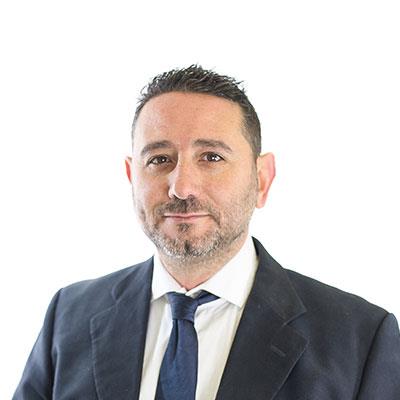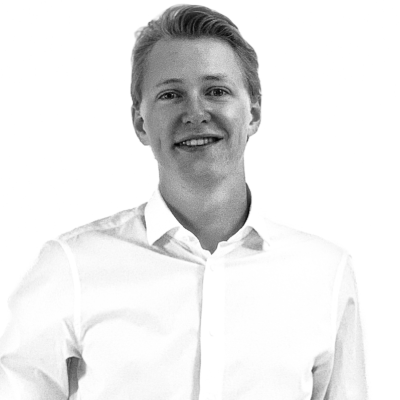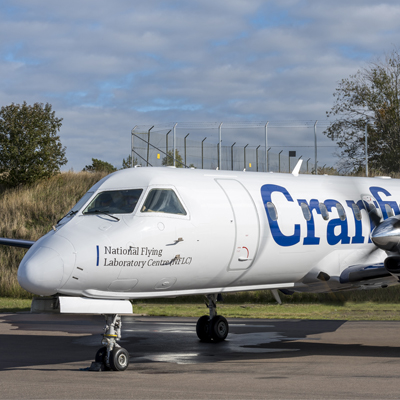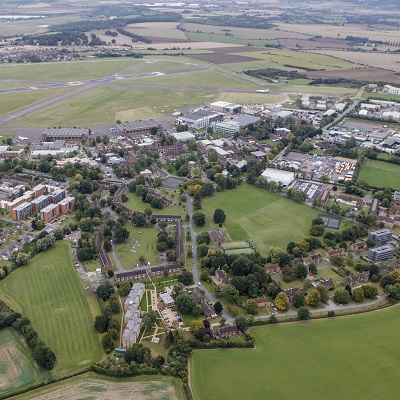Overview
- Start dateOctober
- DurationMSc: Full-time - one year; Part-time - up to three years; PgCert: Full-time - up to one year; Part-time - two years
- DeliveryTaught modules 50%, individual project 50%
- QualificationMSc, PgCert
- Study typeFull-time / Part-time
- CampusCranfield campus
Who is it for?
Suitable if you have an interest in aerodynamic design, flow control, flow measurement, flight dynamics and flight control. Choose your specialist option from the following once you commence your studies:
- Flight Dynamics option: if you want to develop a career in flight physics and aircraft stability and control, more specifically in the fields of flight control system design, flight simulation and flight testing;
- Aerodynamics option: if you want to develop a career in flight physics and specifically in the fields of flow simulation, flow measurement and flow control.
Why this course?
The aerospace industry in the UK is the largest in the world, outside of the USA. Aerodynamics and flight dynamics will remain a key element in the development of future aircraft and in reducing civil transport environmental issues, making significant contributions to the next generation of aircraft configurations.
In the military arena, aerodynamic modelling and flight dynamics play an important role in the design and development of combat aircraft and unmanned air vehicles (UAVs). The continuing search for aerodynamic refinement and performance optimisation for the next generation of aircraft and surface vehicles creates the need for specialist knowledge of fluid flow behaviour.
Cranfield University has been at the forefront of postgraduate education in aerospace engineering since 1946. The MSc in Aerospace Dynamics stems from the programme in Aerodynamics which was one of the first master's courses offered by Cranfield and is an important part of our heritage. The integration of aerodynamics with flight dynamics reflects the long-term link with the aircraft flight test activity established by Cranfield.
You will have the opportunity to fly during a Student Experience Flight in our National Flying Laboratory Centre’s (NFLC) light aircraft. This flight experience will complement your MSc studies, focussing on the effects of controls, aircraft stability and angle of attack. During the flight you will have the opportunity to take control of the aircraft. Each experience is 2 to 3 hours in duration and includes a pre-flight safety briefing outlining the details of the manoeuvres to be flown, a flight of approximately 1 hour, and a post-flight debrief. Read Dominic's blog detailing his flight experience.
Graduates of this course are eligible to join the Cranfield College of Aeronautics Alumni Association (CCAAA), an active community which holds a number of networking and social events throughout the year.
Informed by industry
The Industrial Advisory Panel, comprising senior industry professionals, provides input into the curriculum in order to improve the employment prospects of our graduates. Panel members include:
- Adrian Gaylord, Jaguar Land Rover (JLR),
- Trevor Birch, Defence, Science and Technology Laboratory (Dstl),
- Chris Fielding, BAE Systems,
- Anastassios Kokkalis, Voith,
- Stephen Rolson, European Aeronautic Defence and Space Company (EADS),
- Clyde Warsop, BAE Systems.
Course details
This course consists of optional taught modules, an individual research project and a group flight test project.
The group flight test project consists of two compulsory modules that offer an initial introduction to aerospace dynamics and provide grounding for the group flight test. Choice is a key feature of this course, with specialist options in either aerodynamics or flight dynamics. Choose your option once you have commenced your studies.
Course delivery
Taught modules 50%, individual project 50%
Individual project
The individual research project allows you to delve deeper into an area of specific interest. It is very common for industrial partners to put forward real world problems or areas of development as potential research project topics. The project is carried out under the guidance of an academic staff member who acts as your supervisor. The individual research project component takes place between April and August.
If agreed with the Course Director, part-time students have the opportunity to undertake projects in collaboration with their place of work, which would be supported by academic supervision.
Previous individual research projects have covered:
Aerodynamics option
- Spiked body instabilities at supersonic speeds;
- Aerodynamic loads on a race car wing in a vortex wake;
- Lateral/directional stability of a tailless aircraft;
- Aerodynamic drag penalties due to runback ice;
- Automotive flow control using fluidic sheets;
- Aerodynamic design and optimisation of a blended wing body aircraft.
Flight Dynamics option
- Flight dynamic modelling of large amplitude rotorcraft dynamics;
- Decision making for autonomous flight in icing conditions;
- Comparative assessment of trajectory planning methods for UAVs;
- Machine vision and scientific imaging for autonomous rotorcraft;
- Linear parameter varying control of a quadrotor vehicle;
- Gust load alleviation system for large flexible civil transport.
Modules
Keeping our courses up-to-date and current requires constant innovation and change. The modules we offer reflect the needs of business and industry and the research interests of our staff and, as a result, may change or be withdrawn due to research developments, legislation changes or for a variety of other reasons. Changes may also be designed to improve the student learning experience or to respond to feedback from students, external examiners, accreditation bodies and industrial advisory panels.
To give you a taster, we have listed the compulsory and elective (where applicable) modules which are currently affiliated with this course. All modules are indicative only, and may be subject to change for your year of entry.
Course modules
Compulsory modules
All the modules in the following list need to be taken as part of this course.
Introduction to Aircraft Aerodynamics
| Aim |
|
|---|---|
| Syllabus |
|
| Intended learning outcomes |
On successful completion of this module you should be able to: 1. Distinguish the effects of incompressible flows including vortices and viscosity, boundary layers and basic wing and aerofoil section characteristics. 2. Appraise the implications of compressibility effects; shock waves, supersonic and transonic flow. 3. Understand the use of basic low speed and high speed wind tunnel facilities. 4. Judge the flow science to its application to aircraft design. |
Flight Experimental Methods
| Aim |
The aim of this module is to provide an introduction to the performance, stability and control characteristics of a conventional aircraft. |
|---|---|
| Syllabus |
|
| Intended learning outcomes |
On successful completion of this module you should be able to: 1. Describe the concepts of equilibrium, trim, static, manoeuvre and dynamic stability. 2. Evaluate the cruise and climb performance and the aerodynamic and stability characteristics of a conventional aircraft. 3. Apply the principles of flight test analysis, assessment and sustainability in aviation. 4. Compile and present a technical report in written and verbal form. 5. Work effectively in a group environment. |
Elective modules
Eight of the modules from the following list need to be taken as part of this course.
Modelling of Dynamic Systems
| Aim |
To provide an understanding of the mathematical techniques that underpin both classical and modern control law design. |
|---|---|
| Syllabus |
|
| Intended learning outcomes |
On successful completion of this module you should be able to: 1. Use Laplace transform techniques to derive transfer functions of typical mechanical, electrical and fluid systems. 2. Calculate and plot the step and frequency responses of linear systems. 3. Derive the state equations for typical systems. 4. Obtain discrete time representations of linear systems. 5. Use MATLAB for matrix and systems algebra and to plot system responses. |
Compressible Flows
| Aim |
To provide a knowledge of the physics of compressible flows and the theoretical methods for your calculation. |
|---|---|
| Syllabus |
|
| Intended learning outcomes |
On completion of this module you will be able to: 1. Understand the fundamental phenomena associated with compressible flows. 2. Competently apply analytical theory to compressible flow problems. 3. Understand the fundamentals of CFD methods for compressible flows. |
Viscous Flow
| Aim |
To provide you with a detailed understanding of basic equations and mathematical modelling techniques used in boundary layer flows including the basic methods used for their modelling and prediction. |
|---|---|
| Syllabus |
Basic Concepts:
Characteristics of turbulent flow:
Boundary layer transition: |
| Intended learning outcomes |
On successful completion of this module you should be able to: 1. Apply knowledge of the structure within a boundary layer to flow related problems. 2. Explain current turbulence models and how they may be applied. 3. Interpret and calculate characteristics of the atmospheric boundary layer and apply the data to wind engineering problems. |
Control Systems
| Aim |
To provide knowledge of the fundamentals of control engineering for the analysis and design of control systems in aerospace applications. |
|---|---|
| Syllabus |
|
| Intended learning outcomes |
On successful completion of this module a you should be able to: 1. Analyse and explain the stability, characteristics, behaviour and robustness of single input/ single-output feedback control systems. 2. Design controllers for single-input single-output systems. 3. Use modern PC-based CAD software to solve control engineering problems and design control systems using classical methods. 4. Recognise and explain the advantages and limitations of feedback and recognise the importance of robustness. |
Introduction to CFD
| Aim |
To understand the key features of CFD methods used for simulating external flows for engineering applications. |
|---|---|
| Syllabus |
|
| Intended learning outcomes |
On successful completion of this module you should be able to: 1. Critically understand and able to analyse the processes required to implement aerodynamic problems using Computational Fluid Dynamics. 2. Demonstrate the ability to design and implement a suitable CFD model for external flow simulation. 3. Critically evaluate the limitations of these methods. 4. Critically analyse the CFD data. |
Flight Dynamics Principles
| Aim |
To describe and demonstrate methods for the analysis of the linear dynamics, stability and control of aircraft and their interpretation in the context of an aircraft in flight. |
|---|---|
| Syllabus |
|
| Intended learning outcomes |
On successful completion of this module you should be able to: 1. Apply the small perturbation theory to derive and solve the equations of motion for a conventional fixed-wing aircraft. 2. Assess the flying qualities of a fixed-wing aircraft using the Certification Specifications/Standards. 3. Recommend and design simple stability augmentation system strategies to rectify flying qualities deficiencies. |
Air-Vehicle Modelling and Simulation
| Aim |
|
|---|---|
| Syllabus |
|
| Intended learning outcomes |
On successful completion of this module you should be able to: 1. Recognise, implement and apply selected numerical integration routines for model simulation using modern software tools. 2. Describe air-vehicle dynamics as a set of ordinary differential equations. 3. Define and implement example air-vehicles in terms of their aerodynamic, control, mass and inertia characteristics. Evaluate and critically compare the resultant motion. 4. Identify the requirements for model testing, verification and validation, and demonstrate their application to an air-vehicle model. 5. Define mathematical trim conditions, how they relate specifically to air-vehicles and validate an air vehicle using trim data generated for a range of flight conditions and vehicle configurations. 6. Define mathematical linearisation, how it relates specifically to air-vehicles and validate a non-linear air-vehicle model using the linear model equivalents generated at a range of flight conditions. |
Launch and Re-Entry Aerodynamics
| Aim |
|
|---|---|
| Syllabus |
The course will cover: |
| Intended learning outcomes |
On successful completion of this module you should be able to: 1. Apply hypersonic aerodynamics theory to the analysis of canonical hypersonic flows during high Mach number flight. 2. Identify principal aerodynamic design issues for the launch and descent / re-entry phases of a space mission. 3. Calculate thermal and dynamic loads experienced by a vehicle during launch and re- entry. |
Transonic Aerodynamic Design
| Aim |
The aim of this module is to give you an appreciation of the factors influencing supercritical flow development and the interaction with other aerofoil / wing design features. The aim is also to provide you with knowledge of industrial aircraft design practice / process and project management along with some practical experience. |
|---|---|
| Syllabus |
|
| Intended learning outcomes |
On successful completion of this module you should be able to: 1. Examine the influence of factors affecting super critical aerofoil performance to formulate a good design methodology. 2. Evaluate the factors involved in the design of efficient transonic wings in the context of overall aircraft design and the other allied disciplines 3. Use rapid CFD methods to carry out supercritical wing design and evaluate results against performance criteria, including an appreciation of aircraft certification rules. 4. Assess the limitations of CFD methods for prediction of aerofoil flow characteristics. 5. Analyse the process and management of conceptual aircraft design in industry, including the role of periodic design reviews and “gateway” decision points. |
Technology for Sustainable Aviation
| Aim |
The aim of this module is to provide knowledge of the current technology issues in relation to reducing the impact of aviation of the environment. |
|---|---|
| Syllabus |
|
| Intended learning outcomes |
On successful completion of this module you should be able to: 1. Evaluate the performance characteristics of commercial aircraft in relation to environmental impact and the environmental impact of commercial aviation relative to that of other sectors. 2. Assess the relative impact of key engineering design and operational aspects of commercial aircraft on the environment. 3. Assess the relative importance of technological changes in terms of commercial aircraft design. 4. Appraise low-order analytical/numerical tools, and propose empirical investigations to mitigate aircraft noise. 5. Inspect how noise and emissions can be incorporated into the conceptual design stage of an air vehicle. |
Flying Qualities and Flight Control
| Aim |
The aims of this module are to: |
|---|---|
| Syllabus |
|
| Intended learning outcomes |
On successful completion of this module you should be able to: 1. Critically evaluate and apply advanced tools for the analysis and design of flight control systems, demonstrating appropriate selection and justification based on design requirements. 2. Analyse and synthesise conflicting requirements in flight control system architecture, balancing safety-critical design constraints with control functionality. 3. Assess and critique the impact of command and stability augmentation system constraints on flying qualities, incorporating regulatory and performance considerations. 4. Design and optimise command and stability augmentation systems using advanced modelling techniques, with justification of design choices based on system performance and handling criteria. 5. Critically evaluate and integrate flying and handling qualities criteria to define and justify flight control system design constraints in complex flight scenarios. |
CFD for Aerospace
| Aim |
To introduce you to the: |
|---|---|
| Syllabus |
|
| Intended learning outcomes |
On successful completion of this module you should be able to: 1. Understand and appreciate advanced physical modelling and numerical methods as typically employed by commercial CFD codes. 2. Critically appreciate the design process for complex mesh generation applicable to aerospace sector. 3. Critically appreciate implications of various CFD techniques and turbulence models for aerospace applications. 4. Critically appreciate the post processing of big data in relation to CFD. 5. Understand and implement High Performance Computing (HPC) framework in CFD. |
Multivariable Control Systems for Aerospace Applications
| Aim |
|
|---|---|
| Syllabus |
Multivariable System Analysis
Multivariable Control System Design |
| Intended learning outcomes |
On successful completion of this module you should be able to: 1. Analyse the stability, robustness and performance of multivariable aerospace control systems. 2. Design robust and optimal feedback control systems using state variable techniques using MATLAB. 3. Recognise the advantages and limitations of optimal feedback control. |
Fundamentals of Rotorcraft Performance, Stability and Control
| Aim |
|
|---|---|
| Syllabus |
|
| Intended learning outcomes |
On completion of this module you will be able to: 1. Analyse the aerodynamics and forces influencing helicopter behaviour: Examine the fundamental aerodynamics of rotor systems and the various forces acting on helicopters, including lift generation, induced flow, and gyroscopic effects. 2. Calculate and assess rotorcraft power requirements: Use mathematical models to estimate and evaluate the power necessary for maintaining hover and sustaining forward flight under different conditions. 3. Evaluate the feasibility of rotorcraft flight profiles: Critically assess typical flight profiles for operational viability, taking into account factors like fuel efficiency, flight duration, and mission objectives. 4. Examine rotorcraft stability and control characteristics: Discuss key aspects of stability and control, including control mechanisms and feedback systems essential for safe flight operations. 5. Implement flow control techniques to optimize blade performance: Explore advanced methods to enhance the aerodynamic efficiency of rotor blades, focusing on the application of flow control techniques and their impact on performance. |
Fundamentals of Aircraft System Identification
| Aim |
|
|---|---|
| Syllabus |
Mathematical Foundations for System Identification • (Linear algebra, differential equations, and statistical principles relevant to modelling) Introduction to Dynamic Systems and Estimation Theory • (Deterministic and stochastic system modelling, state-space representation) Classical and Modern Regression Techniques • (Least squares, regularisation, recursive methods) Equation Error and Output Error Approaches • (Model structure selection and error analysis) Maximum Likelihood Estimation and Optimisation Algorithms • (Formulation of likelihood functions, numerical methods, Cramér–Rao bounds) Frequency Domain Identification Methods • (Spectral analysis, transfer function estimation, frequency response fitting) Design of Flight Test Experiments • (Input signal design, excitation quality, data acquisition strategies) Data Pre-processing and Kinematic Consistency Checks • (Sensor validation, noise filtering, coordinate transformations) Case Studies and Practical Applications • (System identification examples for fixed-wing aircraft, rotorcraft, and UAVs using flight test data) |
| Intended learning outcomes |
On the completion of this module you will be able to:
|
Experimental Aerodynamics
| Aim |
This module aims to give you the skills and understanding to assess commonly encountered wind tunnel test requirements and to design appropriate experiments through knowledge of wind tunnel design, measurement techniques and data analysis. |
|---|---|
| Syllabus |
|
| Intended learning outcomes |
On successful completion of this module you should be able to: 1. Safely operate the departments low speed teaching wind tunnels to perform basic wind tunnel testing, 2. Analyse and post process recorded wind tunnel data, 3. Evaluate and select appropriate instrumentation and hardware for common wind tunnel test types, 4. Describe the design principles of wind tunnel layouts and components, 5. Propose an experimental design for common test problems.
|
Positioning, Navigation and Timing Systems
| Aim |
|
|---|---|
| Syllabus |
• Overview of navigation principles and applications.
• Measurement principles and introduction to metrology. • Inertial Navigation Systems: sensors, performance and integration. • Space-based PNT sources: GNSS, LEO, star/sun trackers, opportunistic sources. • Other sources: legacy, visual, magnetic, terrestrial opportunistic. • Time information sources. • Processing techniques and technologies: Pre-processing Acquisition, tracking and discrimination Sensor fusion Machine learning and AI. • Integrity, trust and cybersecurity for PNT. |
| Intended learning outcomes |
On successful completion of this module you should be able to: 1. Categorise sources of position and timing information according to main performance characteristics and suitability to practical scenarios. |
Teaching team
You will be taught by Cranfield's leading experts with many years' industrial experience. Teaching is supplemented by contributions from industry and other outside organisations which reinforce the applied nature of the modules. Previous contributors have included Professor Allan Bocci, Aircraft Research Association (ARA) and Trevor Birch, Defence Science Technology Laboratory (DSTL). The Course Director for this programme is Professor Simon Prince.
Accreditation
The Aerospace Dynamics MSc is accredited by the Royal Aeronautical Society (RAeS) on behalf of the Engineering Council as meeting the requirements for further learning for registration as a Chartered Engineer (CEng). Candidates must hold a CEng accredited BEng/BSc (Hons) undergraduate first degree to show that they have satisfied the educational base for CEng registration. Please note accreditation applies to the MSc award and PgCert does not meet in full the further learning requirements for registration as a Chartered Engineer.
Your career
Industry-driven research makes our graduates some of the most desirable in the world for recruitment in a wide range of career paths within the aerospace and military sector. A successful graduate should be able to integrate immediately into an industrial or research environment and make an immediate contribution to the group without further training. Increasingly, these skills are in demand in other areas including automotive, environmental, energy and medicine.
Recent graduates have found positions in the aerospace, automotive and related sectors, taking roles such as:
- Advanced Simulation Engineer
- Aerodynamics Engineer
- Aerospace Engineer
- Air Vehicle Design Engineer
- Aircraft Performance Engineer
- Flight Control Engineer
- Flight Test Engineer
- Lead Flow Analyst
- Mechanical Design Engineer
- Senior Aerodynamicist
- Wind Tunnel engineer
Employers include:
| Airbus, |
| BAE Systems, |
| Onera, |
| Deutsches Zentrum für Luft- und Raumfahrt (DLR), |
| Defence, Science and Technology Laboratory (Dstl), |
| QinetiQ, |
| Rolls-Royce plc, |
| Snecma, |
| Thales, |
| Selex ES, |
| MBDA, |
| Jaguar Land Rover, |
| Tata, |
| Science Applications International Corporation (SAIC), |
| Triumph Motorcycles. |
A significant number of graduates go on to do research and higher degrees.
Cranfield’s Career Service is dedicated to helping you meet your career aspirations. You will have access to career coaching and advice, CV development, interview practice, access to hundreds of available jobs via our Symplicity platform and opportunities to meet recruiting employers at our careers fairs. Our strong reputation and links with potential employers provide you with outstanding opportunities to secure interesting jobs and develop successful careers. Support continues after graduation and as a Cranfield alumnus, you have free life-long access to a range of career resources to help you continue your education and enhance your career.
Part-time route
We welcome students looking to enhance their career prospects whilst continuing in full-time employment. The part-time study option that we offer is designed to provide a manageable balance that allows you to continue employment with minimal disruption whilst also benefiting from the full breadth of learning opportunities and facilities available to all students. The University is very well located for visiting part-time students from all over the world and offers a range of library and support facilities to support your studies.
As a part-time student you will be required to attend teaching on campus in one-week blocks, for a total of 10 blocks (2 of which are for the compulsory group flight test project) over the 2-3 year period that you are with us. Teaching blocks are typically run during the period from October to March, followed by independent study and project work where contact with your supervisors and cohort can take place in person or online
We believe that this setup allows you to personally and professionally manage your time between work, study and family commitments, whilst also working towards achieving a Master's degree.
How to apply
Click on the ‘Apply now’ button below to start your online application.
See our Application guide for information on our application process and entry requirements.
I chose to study at Cranfield University as it is renowned in within the aeronautics industry. A highlight from my time at Cranfield would be using the different facilities available.
















